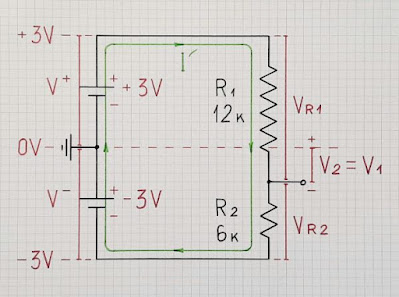Why do we connect a resistor before a Zener diode?
I answered this SE EE question just now. OP asked: " Why do we need a resistor in a Zener diode circuit...?" We can answer this question by looking at the problem from a few points of view: "Dynamic resistor" From this functional point of view, a zener diode can be considered as a non-linear resistor that has the property of keeping the voltage between its terminals constant as the current through it varies. It does this by changing its "resistance" depending on the current. This can be illustrated by a simple experiment: Imagine that a current I flows through a variable resistor with resistance R so a voltage drop V = I.R appears across the resistor. Our task is to keep this drop constant. We can do it by a simple trick - when the current, for example, increases, we decrease the resistance to the same extent and vv. As a result, the product of the two quantities (the voltage drop) will not change. The role of the constant resistor in this arrangemen




